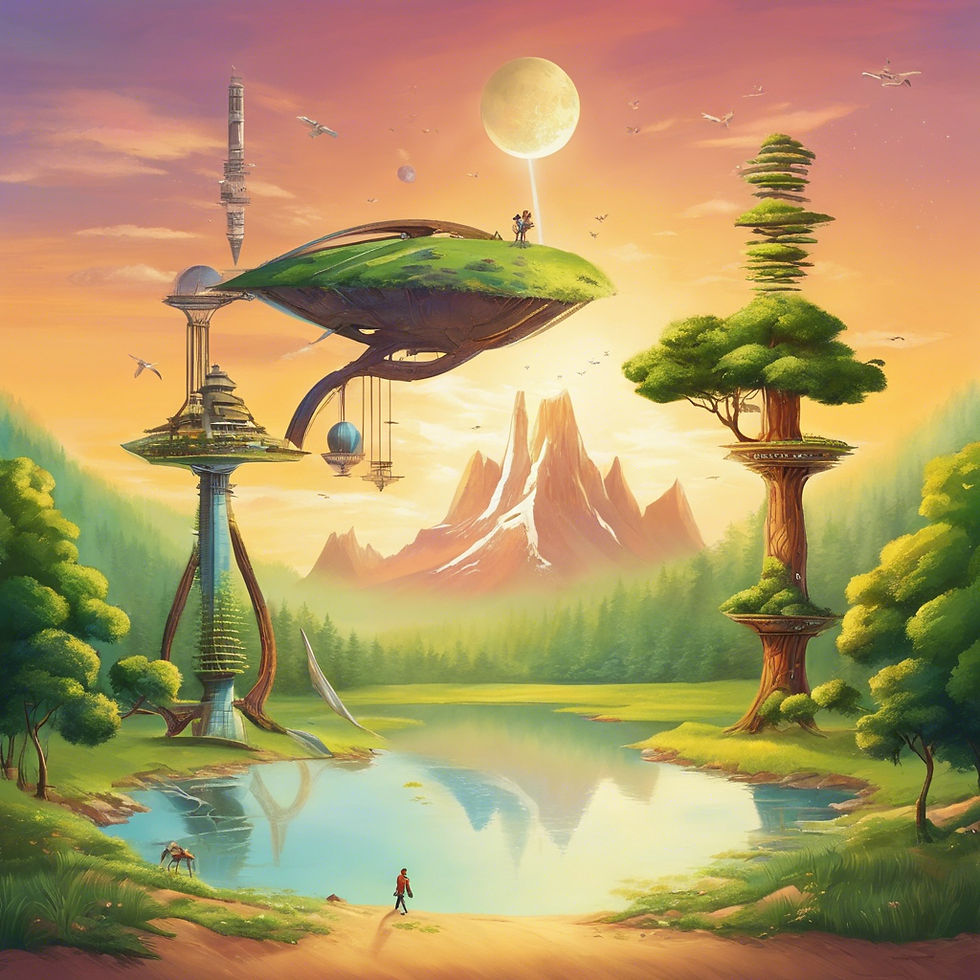"Can Technology and Nature Coexist for a Sustainable Future?"
- Tyce Ryzen
- Jun 9, 2024
- 2 min read

Building Virtue: A Future of Abundance in Harmony with Nature
In the ever-evolving tapestry of human civilization, envisioning a future where abundance thrives within a self-sustained system harmonized with nature is both a profound aspiration and a practical necessity. It's a future where technological prowess isn't at odds with ecological integrity but rather a facilitator of it. This vision isn't merely utopian dreaming; it's a plausible reality awaiting realization through intentional action and collective commitment.
At the heart of this future lies the cultivation of virtue, both individual and collective. Virtue here encompasses not only ethical principles but also a deep reverence for the interconnectedness of all life forms and an unwavering commitment to fostering flourishing for all.
Imagine communities built upon principles of sustainability, where every structure, every system, and every decision is guided by a profound respect for the environment. These communities harness cutting-edge technologies to create closed-loop systems where waste is minimized, resources are maximized, and the natural balance is preserved.
In this future, architecture isn't just about aesthetics and functionality; it's about integration with the surrounding ecosystem. Buildings are designed to be energy-efficient, with green roofs and walls that provide habitats for wildlife while also mitigating the urban heat island effect. Advanced materials and construction techniques minimize environmental impact while maximizing durability and efficiency.
But it's not just about the physical infrastructure; it's about the socio-economic fabric woven into the community. Here, cooperation trumps competition, and solidarity replaces selfishness. Local economies thrive through circular models of production and consumption, where goods are produced and consumed within the community, minimizing the carbon footprint associated with transportation and distribution.
Education plays a pivotal role in shaping this future. From an early age, children are taught the value of sustainability, empathy, and stewardship of the planet. They learn not just to adapt to technology but to wield it responsibly, as a tool for enhancing human well-being while preserving the integrity of the natural world.
Crucially, this future isn't a distant utopia; it's a path we can start treading today. It requires bold leadership, innovative thinking, and a fundamental shift in values. Governments, businesses, and individuals must work together to enact policies that incentivize sustainability and penalize environmental degradation. Businesses must embrace triple-bottom-line accounting, where profit is measured not just in monetary terms but also in social and environmental impact. And individuals must recognize their role as stewards of the planet, making conscious choices in their daily lives to reduce consumption and minimize waste.
The road ahead won't be easy, and there will undoubtedly be challenges and setbacks along the way. But the promise of a future where abundance flourishes in harmony with nature is too great to ignore. It's a future worth striving for, a future built on virtue, where the inherent dignity of all life is honored, and the beauty of the natural world is cherished for generations to come.










Comments